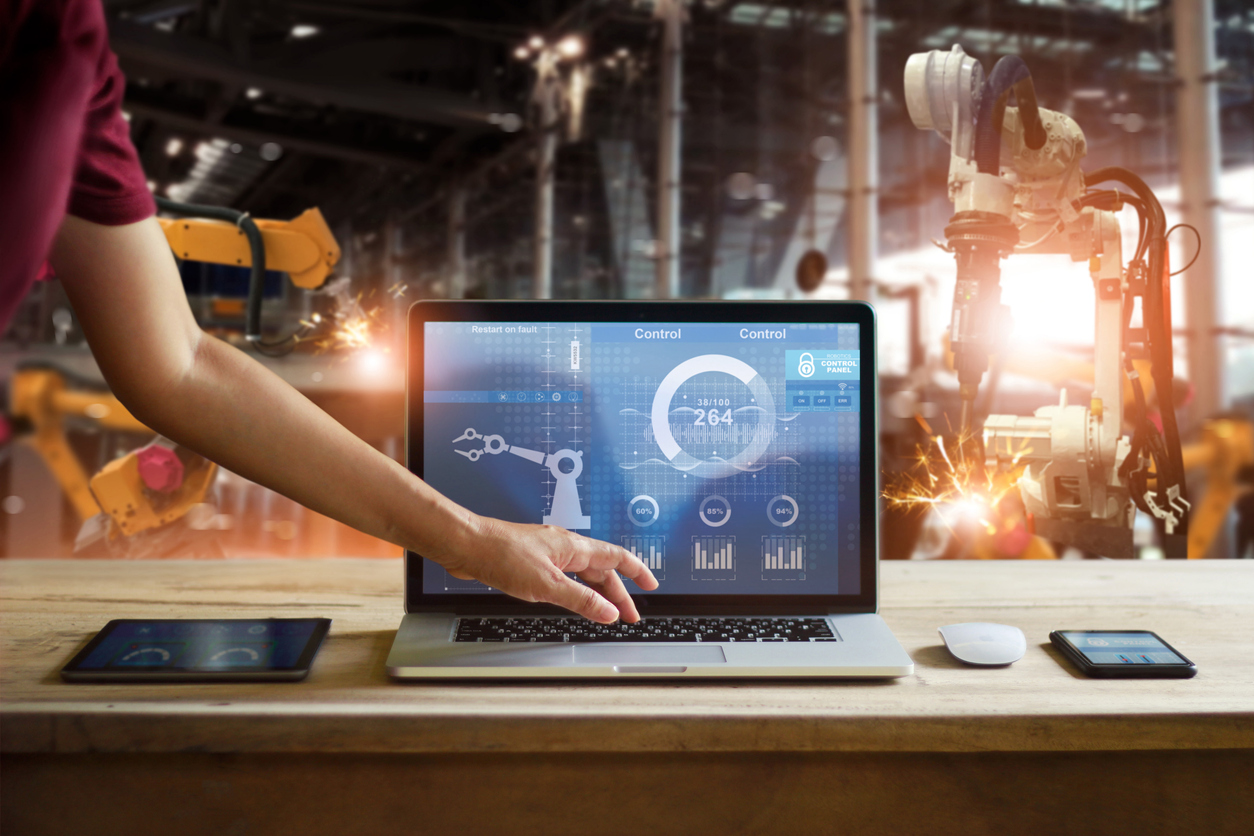
Blog
Robotics and automation are gaining traction in the industrial world, and these five trends are driving this growth.
Key takeaways:
- The industrial robotics industry is expected to reach $52.85 billion by 2026
- 5 trends driving growth:
- Better human-robot collaboration
- An environment-forward focus
- Greater cost-efficiency
- Smarter robots
- The widespread adoption of cloud computing
Technology in the robotics industry continues to improve at a rapid pace. New innovations, better devices, and greater automation mean that robotics solutions speed up a range of activities like never before. Companies around the globe are increasing their reliance on these technologies to improve their processes and productivity, leading to better ROI and supply chain functionality.
Let’s examine what the industrial robotics industry looks like right now, how it’s growing, and the top five trends driving this growth.
How fast is the industry growing?
Robotics continues to be a booming market. As more organizations and companies want the best and the fastest tools to increase productivity, the technology is trying to keep up—and largely succeeding.
The industrial robotics market is expected to increase by more than 9% in 2021, with a projected compound annual growth rate (CAGR) of 4.6% between 2021 to 2024. Other research suggests that the market was valued at $24.35 billion in 2020 and is estimated to reach $52.85 billion by 2026.
Many different nations and industries are demanding more automation and robotics solutions as the world becomes more dependent on artificial intelligence (AI). The separate AI market is expected to grow 16.4% in 2021, reaching $500 billion in 2024 with a CAGR of 17.5%.
Although robotics and AI are technically separate markets, the world’s increased reliance on AI for business processes and systems contributes to the increased demand for robotics in the industrial world.
5 trends driving growth in robotics and industrial automation
So, what’s driving this substantial growth for industrial robotics and automation? Let’s take a look at five significant trends:
1. Increasing human-robot collaboration
A big trend for 2021 that’s likely to stick around is an increase in collaborative robots, which work alongside humans. They complete tasks together in the same shared workspace. A goal is that many of these robots will eventually function at the same level as humans, adjusting to environments as they work and responding to the movements of a human worker in real-time.
Collaborative robots can help organizations ease into the transition of relying on robotics to complete tasks and speed up efficiency.
2. An environment-forward focus
A big draw of industrial robotics is the energy efficiency of these devices since more organizations are putting the environment on their priority list. The efficiency of modern robots can help companies reduce their carbon footprint while improving workflows. Additionally, robots can reduce resource use because they tend to be more accurate and precise, eliminating wasted energy and materials from human error.
3. Greater cost-efficiency
As any technology improves and becomes ubiquitous, it becomes affordable. Robotics costs are lowering to a point where more companies can afford these devices, even small and mid-sized organizations. And once these companies make the investment, they can realistically recoup the expense in the form of increased productivity, efficiency, and workplace safety.
4. Smarter robots
Robots are becoming smarter, so they’re increasingly effective and autonomous. Many AI-enabled robots can learn processes and tasks while performing them by gathering data and automatically improving as they go.
Some robots are now even essentially self-healing—able to identify issues and repair themselves without human intervention. These updates have huge potential for robots to keep working, learning, and fixing problems just like a human worker would.
5. The widespread adoption of cloud computing
Computing tasks worldwide rely on the cloud for data transfer and storage. Robotics is no exception, as having continuous access to data that drives functionality is essential. Leveraging the cloud also means that robots can work better with one another, continuously communicating and increasing efficiency while they’re performing tasks.
Why Wi-Fi is critical for industrial robotics
The Internet of Things (IoT) is causing greater global reliance on Wi-Fi, and industrial robots are now a big part of this trend. For these devices to work correctly, collaborate with one another and humans, and gather and learn from data, they must have strong wireless connections.
Connectivity is mission-critical for organizations depending on robots, AI, and automation for everyday tasks and processes. And as these technologies become more common and advanced—sending greater amounts of data on more devices—the Wi-Fi must keep up with demand.
Organizations can help maintain reliable, high-performing connections with wireless network monitoring solutions from 7SIGNAL. Our platform ensures that you don’t lose productivity or efficiency with disconnected devices or a low-performance network. IT managers get the visibility they need to address issues before they cause significant problems with tests and monitoring running 24/7.
7SIGNAL® is a leader in enterprise wireless experience monitoring. 7SIGNAL provides a cloud-based platform that continuously monitors wireless networks and identifies elusive performance issues impacting application performance and digital experience. By taking the “outside-in” approach to monitoring, 7SIGNAL has visibility into the edge of any enterprise or home Wi-Fi network where complex device interaction exists, and user experience matters most. The platform maximizes employee productivity, operational efficiency, and network ROI. Sapphire Eye® and Mobile Eye® are designed for and deployed at the world’s most innovative organizations, educational institutions, healthcare systems, and government agencies. Learn more at www.7signal.com.